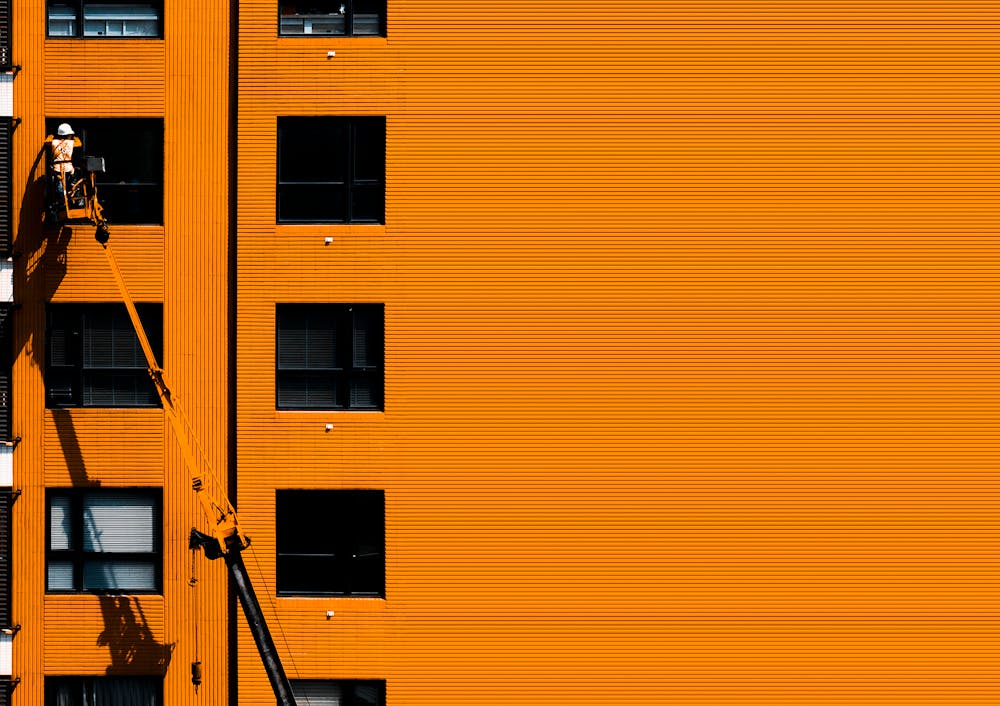Beyond Scaffolding: Modern Approaches to Building Maintenance

The face of building maintenance is changing. For decades, scaffolding was the go-to solution for repairs and renovations. While the job got done, it also came with hassles. Scaffolding could disrupt daily life, take ages to set up and take down, and even put workers at risk.
But the tide is turning, especially in the UK, where a push for innovation and sustainability is driving change. New, innovative methods are emerging that are safer, faster, and easier on the budget. These modern approaches prioritize getting the job done right without causing unnecessary headaches.
In this article, we’ll take a closer look at these exciting new methods. We’ll see how rope access techniques, drones, and high-tech materials are transforming the way we care for our buildings.
The Limitations of Traditional Scaffolding
Scaffolding, a long-standing method in building maintenance, has its limitations. Safety is a major concern, as workers face risks during assembly and dismantling. The sheer size of the scaffolding also disrupts daily life for building occupants and neighbors due to noise, debris, and obstructed views.
Additionally, scaffolding takes considerable time to set up and remove, extending project timelines. The rigid structure can hinder access to specific areas of the building, making certain tasks more difficult. Finally, the environmental impact of scaffolding – from the raw materials used to the transportation required – cannot be overlooked.
Rise of Rope Access Techniques
Rope access is proving to be a game-changer in building maintenance, offering a nimble and efficient alternative to traditional scaffolding. Expert technicians, equipped with ropes and specialized gear, can access even the trickiest spots in a building. These professionals undergo intense training to ensure both their safety and top-notch workmanship in countries like the UK.
In recent years, rope access painting has also proven to be an effective solution for painting projects that would be difficult or dangerous to tackle with traditional methods. Thus, rope access painting UK has become a popular choice for high-rise buildings, bridges, and other structures where scaffolding is impractical or poses safety risks. Hiring such services allows workers to move around easily, reaching complex structures and areas that scaffolding simply can’t.
Plus, it’s much quicker to set up and takes up far less space, causing minimal disruption to those nearby. Safety is paramount in rope access, with rigorous protocols and backup systems in place to protect workers.
Drones: Eyes in the Sky
- A cutting-edge tool: They have revolutionized building inspections and maintenance. They offer a bird’s-eye view that was once impossible.
- Detailed data collection: Drones, with high-res cameras and sensors, can collect detailed data. They can image a building’s exterior and also include HD photos and videos to find cracks, leaks, or damage.
- Enhanced safety: Drones can inspect dangerous, hard-to-reach areas without risking human workers. This is particularly valuable for tall buildings, bridges, or structures with complex architecture.
- High-Quality images: It allow for early detection of issues. This can lead to proactive maintenance. It can prevent minor issues from becoming costly repairs.
- Cost-effective solution: Drone inspections are often cheaper than traditional methods. Those methods require scaffolding or rope access. They can also be completed more quickly, reducing downtime for building occupants.
Advanced Materials and Coatings
The future of building maintenance lies in innovative materials and coatings engineered for durability and longevity.
Self-healing coatings, for example, can fix minor cracks and scratches. They prevent these issues from worsening over time. Hydrophobic surfaces repel water, reducing the risk of moisture damage and staining. Anti-graffiti treatments make cleaning easier and deter vandalism, preserving a building’s appearance.
These advancements reduce the frequency of maintenance tasks and lower long-term costs. With fewer repairs needed, building owners can save money and time.
Also, longer-lasting building components are more sustainable. They reduce waste by cutting the need for replacements.
Smart Buildings and Predictive Maintenance
Smart buildings are changing building maintenance. They have sensors and data analytics. These sensors collect real-time data on everything. It includes HVAC performance, energy use, and structural integrity.
By analyzing this data, building management systems can predict potential problems before they escalate into major failures. This predictive maintenance approach enables proactive repairs. It cuts downtime and extends the lifespan of building components.
Real-time monitoring finds issues quickly. Automation streamlines maintenance tasks. It boosts efficiency and reduces human error.
Conclusion
The days of relying solely on scaffolding for building maintenance are fading. New methods are changing the industry. They include rope access, drones, advanced materials, and smart building tech. These solutions improve safety, efficiency, and cost. They also minimize disruption to building occupants and the environment. As technology advances, we can expect more exciting developments in building maintenance.
